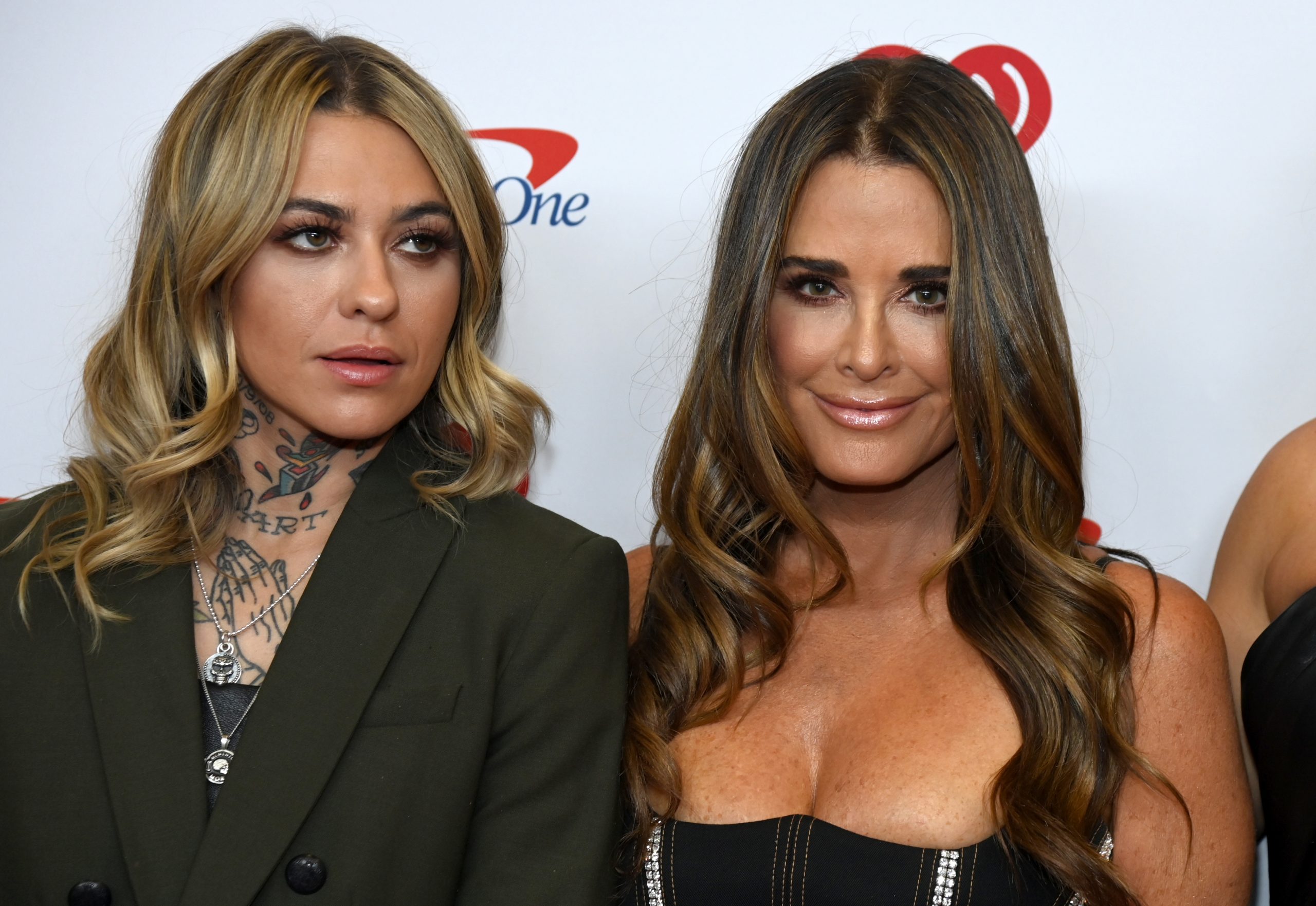The Power of Friendship Amid Health Struggles
- “Real Housewives of Beverly Hills” star Kyle Richards, 55, and country singer Morgan Wade, 29, have forged a close friendship in recent years that’s been showcased across social media.
- Last year, Wade learned that she was a carrier of the BRCA gene mutation, which increases your risk for breast and ovarian cancer. She underwent a preventative mastectomy (removal of the breasts) to reduce her risk of cancer.
- When either the BRCA1 or BRCA2 gene is altered, damaged DNA cannot be adequately repaired, leading to an increased risk of breast and ovarian cancers.
- Several genetic tests are available to determine if you have the BRCA1 or BRCA2 gene mutation. Some people who find out they have the mutation opt for preventative surgery to reduce their cancer risk.
“I can tell you that she is absolutely one of my best, best friends in the world,” Richards told Andy Cohen.
Read More
“I stalked Morgan Wade on IG after listening to her music while driving solo from Utah to Colorado while making House Wives of the North Pole, and today we met up in person for the first time. The most unlikely of friendships, some may think, but kinship knows no boundaries,” Richards captioned her social media post.
View this post on Instagram
The last 12 months have been filled with emotions for Wade; thus, the added support surely has been helpful. Last year, she learned she was a carrier of the BRCA gene mutation, which increases your chances of getting breast and ovarian cancer.
To reduce her chances of cancer, she underwent a prophylactic or preventative mastectomy, which is an operation where the breast tissue is removed to prevent cancer from developing in the future.
“Risk-reducing mastectomies are an operation where we take women at, usually, very high-risk for getting breast cancer for genetic mutation carriers, who are the ones at the highest risk; there’s unfortunately only one way to actually prevent breast cancer,” Dr. Elisa Port, Chief of Breast Surgery at Mount Sinai Health System, tells SurvivorNet.
Export Resources on Breast Cancer Treatment
Decision-Making Around a Mastectomy
Having your breasts removed can be an overwhelming and emotional experience. Among the things that weighed heavy on Wade’s mind was the mastectomy’s ability to limit her regular exercise routines.
When a woman decides to have a mastectomy, several factors go into that decision. Among things to consider is whether to have breast-conserving surgery such as a lumpectomy. These decisions should be made alongside your doctor by openly and candidly discussing risks vs. benefits.

“A double mastectomy typically takes about two hours for the cancer part of the operation, the removing of the tissue,” Dr. Elisa Port, Chief of Breast Surgery at Mount Sinai Health System, tells SurvivorNet. “The real length, the total length of the surgery, can often depend on what type of reconstruction [a patient] has.”
WATCH: What Happens During a Double Mastectomy
Other factors that weigh into the decision to get a mastectomy are the size and features of the tumor and your family history. However, the gravity of your decision comes into full view, especially if you choose to get a mastectomy and remove both of your breasts.
Some women decide to have their breasts reconstructed and have implants put in right after the mastectomy, while others don’t have reconstruction at all.
Dr. Port added that most women do opt to have some reconstruction. The length of these surgeries can vary a great deal. When implants are used, the procedure can take two to three hours (so the total surgery time would be around five hours). There is also the option to take one’s own tissue (usually from the belly area) and transfer it into the breast area during reconstruction.
Understanding the BRCA Gene Mutation
The country music artist underwent testing for the BRCA gene mutation, which increases a person’s risk for breast cancer. The tests revealed she had the mutation.
BRCA is comprised of two genes: BRCA1 and BRCA2. Both BRCA1 and BRCA2 contain proteins that work as tumor suppressors.
They help repair damaged DNA and ensure the stability of each cell’s genetic material.
When either of these genes is altered, that mutation can mean its protein product does not function properly. The result of a nonfunctioning protein means damaged DNA may not be repaired correctly.
WATCH: Understanding BRCA Gene Mutation
BRCA1 and BRCA2 can increase the risk of female breast and ovarian cancers.
Several genetic tests are available to determine if you have the BRCA1 or BRCA2 gene mutation. Hereditary genetic testing is usually done with a blood or saliva test.
If you discover that you do have a mutation, there are options available to manage your cancer risk, which include:
- Enhanced screenings
- Prophylactic (risk-reducing) surgery, which involves removing as much of the “at-risk” tissue as possible
- Chemoprevention, or the use of medicines to reduce the risk of cancer.
Questions to Ask Your Doctor
If you’re facing the option of having a mastectomy, here are some questions to consider asking your doctor:
- What can I do to prepare for a double mastectomy?
- What happens before and after the procedure?
- For reconstruction, what are the benefits of using implants over my tissue and vice versa?
- What should I know about implants? Should I opt for preventative surgery?
- What will recovery look like after the procedure?
- What are the benefits of a watch & wait approach vs. preventative surgery?
- What kind of surveillance is required after the surgery?
Learn more about SurvivorNet's rigorous medical review process.

